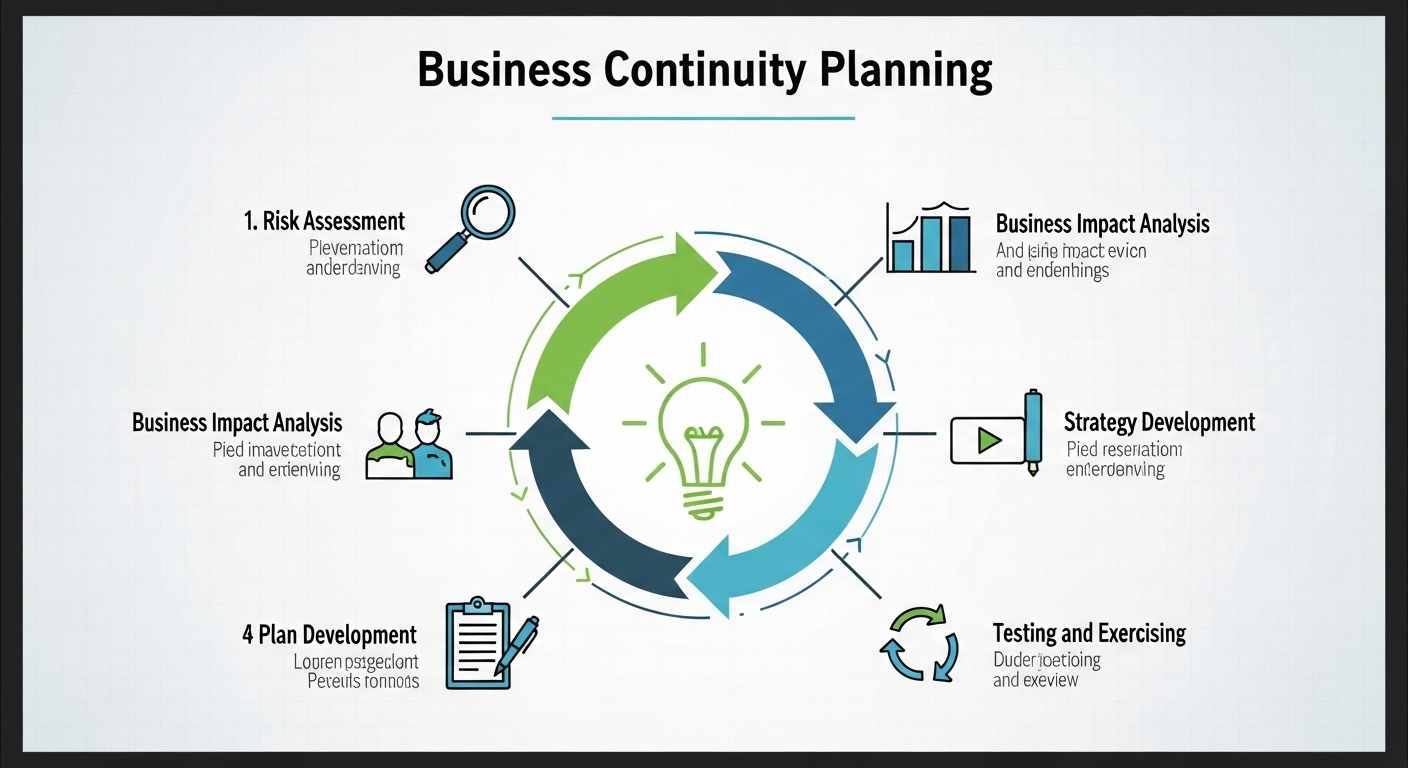
Business continuity planning preserves essential work during disruptions through clear impact analysis, prioritized recovery actions, and disciplined communication that bridges the gap until normal service is restored. Treat the program as living documentation with testing, audits, and targeted improvements that lower downtime risk and increase stakeholder confidence in regulated and customer-facing environments.
Why Business Continuity Planning Matters
Crises span cyber incidents, supplier shortfalls, severe weather, and facility outages, and a standard playbook protects people and assets while critical services return within agreed tolerances. Strong governance converts policy into execution, assigns decision rights, and accelerates recovery for processes that cannot tolerate long interruptions.
Pair business continuity planning with a disaster recovery plan to restore systems and data while teams use manual workarounds to keep customer commitments in motion. A consistent review rhythm in leadership meetings keeps risk, readiness, and recovery metrics visible alongside financial measures.
Business Continuity Planning Essentials
A resilient program links strategy to field execution, validates capability through exercises and audits, and updates artifacts as operations and threats evolve.
Core Components:
Assessment and business impact analysis: Identify time‑critical processes, define recovery time and point objectives, and map dependencies using a business impact analysis checklist grounded in NIST SP 800‑34 contingency planning.
Preparedness: Implement preventive controls, alternate sites, documented procedures, and an ISO 22301 business continuity management system that keeps readiness measurable across the enterprise.
Response and communications: Activate teams, escalate decisions, and follow a communications playbook that keeps staff, suppliers, and customers informed across the incident lifecycle.
Recovery strategies: Combine backups, manual workarounds, diversified vendors, and facility options, aligning closely with the disaster recovery plan for technology services and data.
Assurance and improvement: Run tabletop, functional, and full‑scale tests, fix gaps quickly, and apply structured management reviews to sustain momentum and funding.
Map each mission‑critical process to a recovery playbook with success metrics, then review those metrics in the same process as operational KPIs to embed continuity discipline in daily management.

Build and Sustain Momentum
Clear scope, ownership, and objectives anchor execution, followed by step‑by‑step documentation of how to create a plan that teams can use under pressure without ambiguity. Practical toolkits help, including a business continuity plan template for small business that centralizes contacts, roles, runbooks, supplier data, and critical dependencies in one place. Regular training and realistic drills should incorporate a crisis management solution for coordinated decision‑making and consistent messaging across channels.
Integrated exercises that test continuity alongside the disaster recovery plan confirm end‑to‑end restoration from manual procedures to full cutback to systems. Simple KPIs such as recovery times hit, exercise findings closed, supplier readiness verified, and documentation currency keep business continuity planning visible and funded.
Conclusion
Business continuity planning turns resilience into routine practice, protecting people, stabilizing operations, and speeding recovery through documented, tested, auditable methods that improve over time. Business Contingency Group delivers business continuity disaster consultants who can design, test, and scale a business continuity program.
Develop your crisis management solution and disaster recovery plan today with Business Contingency Group, designed for measurable uptime where it matters most!










Write a comment ...